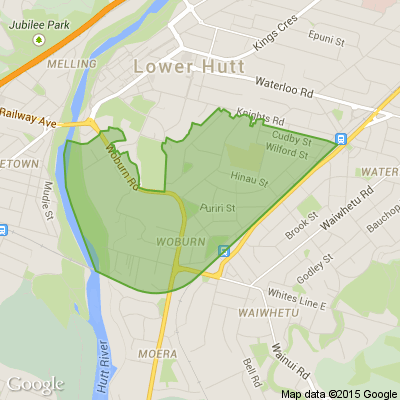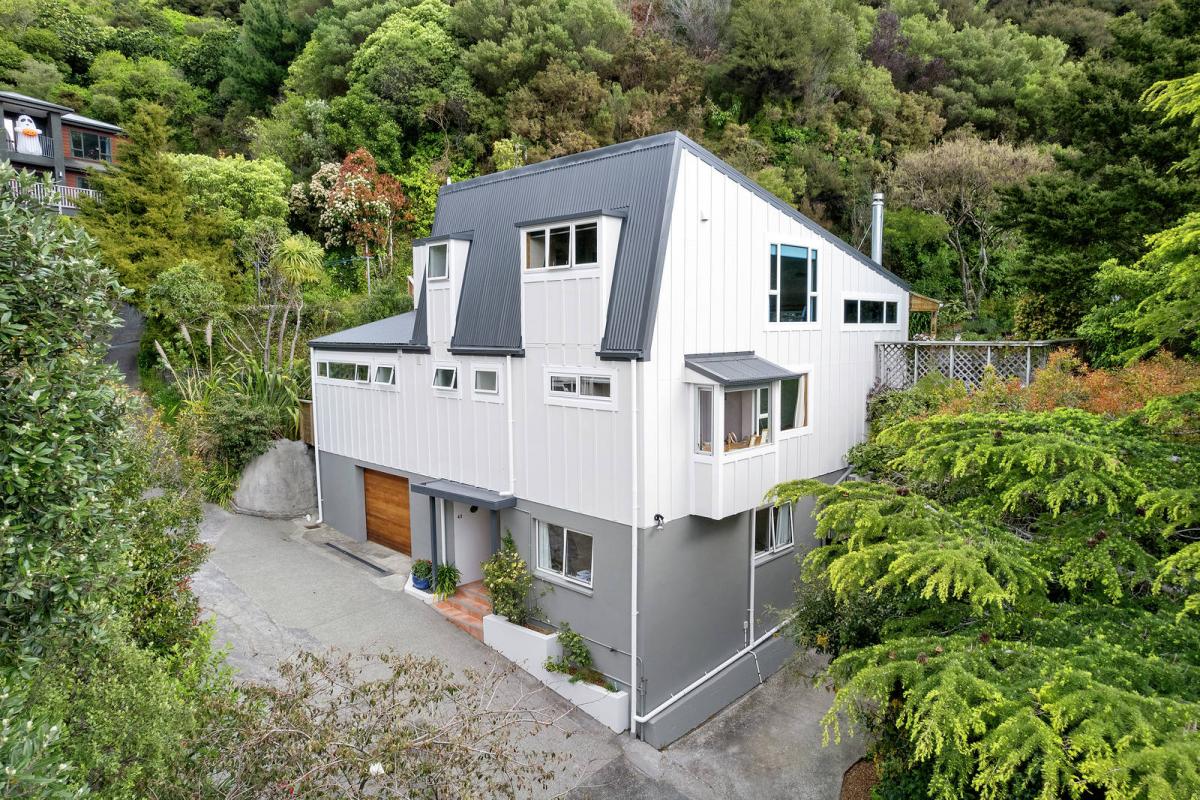
Know what’s happening
Access the private noticeboard for verified neighbours near you. Keep informed about any suspicious activity, send urgent updates to your neighbours when required and discuss emergency planning.
Get to know your neighbours
Browse the directory and start getting to know your neighbours. Don’t want to post to the whole neighbourhood? Send a private message.
Buy, sell and give away
Want to declutter your garage? Buy some used household items? Give away some garden stuff? Become a verified neighbour to browse and post items for sale. Trading is simple when everyone lives nearby.


Nearby
Normandale, Alicetown, Avalon, Epuni, Hutt Central, Tirohanga, Harbour View, Maungaraki, Moera, Waterloo, Waiwhetu, Fairfield, East Harbour, Petone, Korokoro, Boulcott, Naenae, BelmontWondering about something in your neighbourhood?
Whether it's a new building going up or a strange noise you keep hearing, ask your neighbours here.

Thank you for using Neighbourly
You may receive an email confirmation for any offer you selected. The associated companies will contact you directly to activate your requests.
Trupti Biradar Reporter from Stuff Travel
Imagine watching the Milky Way from an underwater hot spring hammock in the mountains. Read more on Stuff.co.nz by clicking the link below.
Trupti Biradar Reporter from Stuff Travel
Many thought that the lack of international travellers would mean that Kiwi families would fill their shoes – at a fraction of the cost. But the reality is that it's still not that cheap. We have some ideas to get you started, read about them in our story below. Have you booked a getaway for… View moreMany thought that the lack of international travellers would mean that Kiwi families would fill their shoes – at a fraction of the cost. But the reality is that it's still not that cheap. We have some ideas to get you started, read about them in our story below. Have you booked a getaway for the school holidays? Where are you going? Did you find it was more affordable or not?

156 replies (Members only)
It’s Four Square’s 96th Birthday - but you get the birthday cards!
Spend $25 or more at your local Four Square and get one of three free collectable card games! Hurry instore before they’re gone! Offer ends July 12, while stocks last.
T&Cs apply.
Find out more

Geetika from Petone
2 PTE Academic test preparation books, 2015 print, in very good condition.
1. The official guide to PTE Academic, with CDs
Details:
Edition 2
ISBN 9781447928911
Published 21/06/2012
Published by Pearson United Kingdom… View more2 PTE Academic test preparation books, 2015 print, in very good condition.
1. The official guide to PTE Academic, with CDs
Details:
Edition 2
ISBN 9781447928911
Published 21/06/2012
Published by Pearson United Kingdom
2. PTE Academic Practice Tests plus with key (CD)
Details:
Edition 1
ISBN 9781447937944
Published 29/03/2013
Published by Pearson United Kingdom
Pages 208
Price: $60

Sarita Puthran from PIZZAVENUE
Try our Naanzas, choose your sauce (Butter, Tikka, Saagwala, Rogan Josh, Korma, Vindaloo) and the toppings (Paneer, Chicken, Beef or Lamb)from $22.99. Add Curly Fries, Prawn Twisters, Mini Cocktail samosas or the popular Cheesy Jalapeno Bites........
Exciting news! We've teamed up with NZ Gardener for the Ryman Healthcare Gardener of the Year 2020. This year, Kiwis can nominate and read nominations on Neighbourly.
Ryman Healthcare with NZ Gardener is on the hunt for green-fingered good sorts – individuals or groups who have used … View moreExciting news! We've teamed up with NZ Gardener for the Ryman Healthcare Gardener of the Year 2020. This year, Kiwis can nominate and read nominations on Neighbourly.
Ryman Healthcare with NZ Gardener is on the hunt for green-fingered good sorts – individuals or groups who have used their gardening skills to help other people.
There are some amazing prizes up for grabs so if you know a homegrown hero who is using their gardening skills for good, nominate them here now!
Nominate Now

Monica from Waterloo
Please support our local youth choir by donating goods (Monica 5678267) or coming on down on Saturday 4th July to 60 Knights Road (just across from Queensgate). We will have steak and sausage sizzle and baking and loads of bargains. Clothes fill-a-bag for $5 only! Woohoo!

Joshua from
Whether it’s keeping our garden beds weed-free, trimming hedges to look just perfect, or simply mowing the lawns, we work within most budgets to keep your garden looking tidy.
For a reasonable estimate
Give us a call at 027 548 9818
Or
Visit www.pricesmart.co.nz...

We’re celebrating the latest issue of The Forever Project magazine! It explores how New Zealand can bounce back from Covid-19 in a climate-friendly way. Find that content at foreverproject.co.nz.
For a sustainable future, join Stuff in The Forever Project. Sign up to our weekly newsletter and … View moreWe’re celebrating the latest issue of The Forever Project magazine! It explores how New Zealand can bounce back from Covid-19 in a climate-friendly way. Find that content at foreverproject.co.nz.
For a sustainable future, join Stuff in The Forever Project. Sign up to our weekly newsletter and be in to win one of 100 limited-edition reusable beeswax Honeywraps. Each wrap can save 75 metres of plastic going into our landfill or oceans.
Sign up here

Clean up around your place with your choice of a free Resene cleaning product when you spend $100 or more at your local Resene owned ColorShop until 27 July 2020. Plus get 10L of Resene Ceiling Paint white for $99. Tinting and PaintWise levy extra.
These offers are available to … View moreClean up around your place with your choice of a free Resene cleaning product when you spend $100 or more at your local Resene owned ColorShop until 27 July 2020. Plus get 10L of Resene Ceiling Paint white for $99. Tinting and PaintWise levy extra.
These offers are available to Resene cardholders – if you don’t have one you can sign up free when you’re in store.
Find out more

Jo Haywood Reporter from Homed
Hey neighbours, there are few Kiwis who haven't experienced cold or damp housing at some point in New Zealand, whatever part of the country you call home. So what's being done to change that for future generations?
Here's … View moreHey neighbours, there are few Kiwis who haven't experienced cold or damp housing at some point in New Zealand, whatever part of the country you call home. So what's being done to change that for future generations?
Here's how a passive revolution and building code changes could help our health - and the climate.

The Team from Wellington Water
We found this photo in a retro booklet all about the Waterloo Pumping Station (now known as the Waterloo Water Treatment Plant) from 1981, and had to compare it to what it looks like now!
The station opened on 15 May 1981, and was designed to use the artesian underground water resource of the … View moreWe found this photo in a retro booklet all about the Waterloo Pumping Station (now known as the Waterloo Water Treatment Plant) from 1981, and had to compare it to what it looks like now!
The station opened on 15 May 1981, and was designed to use the artesian underground water resource of the Lower Hutt Valley to its maximum extent 💧
Eight wells supply water from the Waiwhetu aquifer to the Water Treatment Plant located right next to the Waterloo Train Station 🚉
Learn more about the treatment plant here: wellingtonwater.co.nz/your-water/drinking-water/
The Team from Red Cross Shop Petone
This National Volunteer Week, we’re recognising all the amazing volunteers who form the backbone of emergency response in Aotearoa and support their communites every day.
THANK YOU, VOLUNTEERS!
When Aotearoa faces challenging times, Kiwis always step up to support people in need. Volunteers … View moreThis National Volunteer Week, we’re recognising all the amazing volunteers who form the backbone of emergency response in Aotearoa and support their communites every day.
THANK YOU, VOLUNTEERS!
When Aotearoa faces challenging times, Kiwis always step up to support people in need. Volunteers are instrumental in ensuring that we get through, together.
“Every day, a network of 11,000 Red Cross volunteers and members across the country help us respond to disasters, settle new Kiwis, help run our shops, deliver Meals on Wheels, teach former refugees how to drive, sew curtains for families in need, and so much more. Last financial year, Red Cross volunteers gave close to 120,000 hours of their time. They are the hands and feet of almost everything we accomplish,” says Niamh Lawless, our Secretary General.
Please click on "Read More" to read Justine's story.

 Loading…
Loading…
Are you sure? Deleting this message permanently removes it from the Neighbourly website.
 Loading…
Loading…

 Tender
Tender



 Marketed by Lou Macdonald
Marketed by Lou Macdonald

 Tender
Tender



 Marketed by Jerry Waddington
Marketed by Jerry Waddington





 Marketed by John Donnelly
Marketed by John Donnelly

 Auction
Auction



 Marketed by Ben Atwill
Marketed by Ben Atwill





 Marketed by John Donnelly
Marketed by John Donnelly

 Deadline Sale
Deadline Sale


 Marketed by Rochelle Forbes
Marketed by Rochelle Forbes

 Tender
Tender



 Marketed by Jerry Waddington
Marketed by Jerry Waddington

 Tender
Tender


 Marketed by Jerry Waddington
Marketed by Jerry Waddington
© Neighbourly 2024
